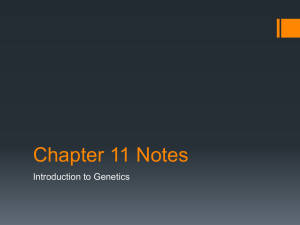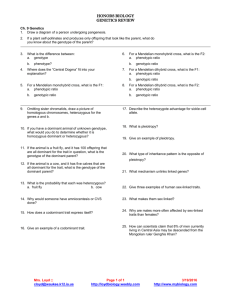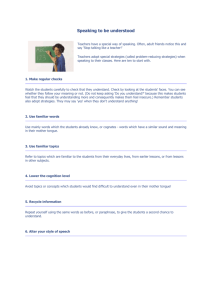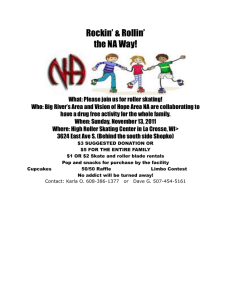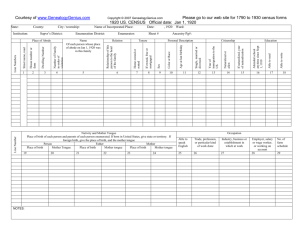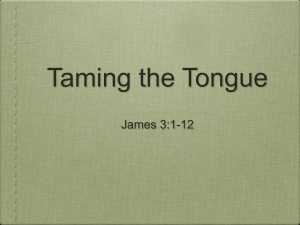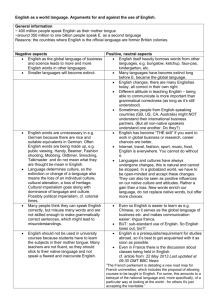AP Biology Notes tues 317
advertisement
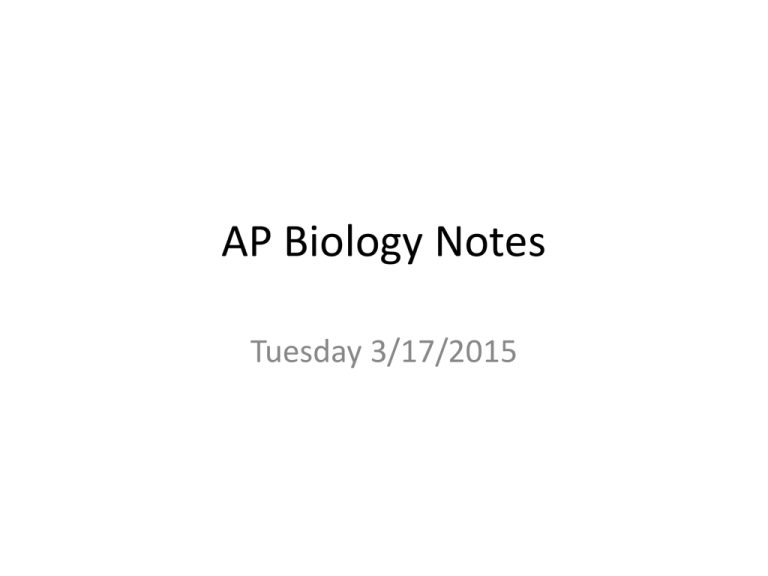
AP Biology Notes Tuesday 3/17/2015 Goals for the day 1. Be able to define and use basic genetics vocabulary 2. Be able to set up and complete a genetic problem to predict the outcome of offspring Question of the Day 3/17 Where do we get our “genetics” from? Double Helix Discussion • Last thoughts/questions?? • Turn in Discussion Day 3 • Hand in Character map & book on Friday 5. "We are like dwarfs sitting on the shoulders of giants. We see more, and things that are more distant, than they did, not because our sight is superior or because we are taller than they, but because they raise us up, and by their great stature add to ours.“ A. Discuss how you think this statement relates to the discovery of the structure of DNA. B. Discuss how this is relevant for all scientific discovery/understanding, and research in other fields in our modern world. Keys to Success in Genetics Unit 1. 2. 3. 4. ASK QUESTIONS Take Notes Go through problems Make sure YOU understand how to work each type of problem & understand the “whys” of what we are doing 5. Stay on Task 6. ASK QUESTIONS Genetics Genetics – the study of how organisms inherit different features from their parents • Parents send information about TRAITS (characteristics ) to their offspring. We refer to this information as a gene, which is a segment of DNA that codes for a specific trait. • GENES are found on chromosomes and are made up of DNA. Each individual has two copies of a gene, one from each Parent. (One copy from _____ & One from _______) •An ALLELE is a – form of a trait The two copies you have of your genes may or may not have the same Information (or alleles). Example: Both of your parents gave you an ALLELE for the trait of “tongue rolling” Example: Both of your parents gave you an ALLELE for the trait of “tongue rolling” Your Mom may have given you an allele that to be able to roll your tongue & Your Dad might have given you an allele to not be able to roll your tongue. So can you roll your tongue?? A DOMINANT trait – the Powerful trait (the stronger trait) always represented with a Capital letter Example: A RECESSIVE trait – the weaker trait, can be hidden by a dominant allele, always represented with a lowercase letter Example: The ability to roll your tongue is a DOMINANT trait, and is therefore represented with capital “T” Note: the choice of letter usually comes from the name of the DOMINANT trait. Not being able to roll you tongue is a recessive trait, and is therefore represented with a lowercase “t” •So if tongue rolling is dominant and a person has one dominant & one recessive allele can they roll their tongue??? • If the ALLELES you got from each parent are the same alleles the individual is said to be Homozygous for the trait. – Ex: • Homologous chromosomes are chromosomes with the ______ information, size, & shape. Homo means the _________. • If an individual has different alleles the individual is said to be Heterozygous for the trait. • Ex. _______ • Hetero means the opposite of homo, it means DIFFERENT Homozygous or Heterozygous? AA Aa bb Tt pp Qq PHENOTYPE its ______________ appearance. What an organism _________ like. I remember “PH” Phenotype/Physical Examples of Phenotypes: Height Or anything else you can SEE! GENOTYPE – the types of ALLELES that an organism has for a particular trait (i.e. tongue rolling) Examples of Genotypes: , , (The combination of the two alleles you have for a trait is your genotype) GENOTYPE – the types of ALLELES that an organism has for a particular trait (i.e. tongue rolling) Homozygous or Heterozygous refer to an organism’s ____________________ (Phenotype or Genotype) If having Acne is dominant to not having Acne write the phenotypes: Make yourself a Key each time!! AA_____________ Aa_____________ aa______________ If having Big eyes is dominant to having small eyes write the possible GENOTYPES: Make yourself a Key each time!! Big Eyes _____________ small eyes_____________ We defined the word “Hybrid” for our purposes it means two different parents or traits. If you have a ring that is a gold hybrid, it is made of some different things besides gold. What word that we discussed today would be a synonym (mean the same thing) as the word “Hybrid”? •Hybrid = ____________ If “Pure” means being the same throughout, as in pure gold has only gold. What word we discussed today would be a synonym (mean the same thing) as the word “Purebred”? Purebred = ________________________ Parents & Offspring • P1 = Par Keys to Success in Genetics Unit 1. 2. 3. 4. ASK QUESTIONS Take Notes Go through problems Make sure YOU understand how to work each type of problem & understand the “whys” of what we are doing 5. Stay on Task 6. ASK QUESTIONS New Tools Punnett Square – diagram used to predict the outcome of a genetic cross. Created by Reginald Punnett (1875 –1967), a British geneticist, in the early 1900s New Tools Punnett Square – diagram used to predict the outcome of a genetic cross. Legend Parents Cross it Genotypic Phenotypic Ratio Ratio Tongue Roller Problem #1 Tongue Rolling is dominant to not being able to roll your tongue (non-roller). Cross a Heterozygous tongue roller with someone who cannot roll their tongue. Tongue Roller Problem #1 to not being able to roll your tongue (non-roller). Cross a with someone who . Legend Parents Cross it Genotypic Phenotypic Ratio Ratio Tongue Roller Problem #1 to not being able to roll your tongue (non-roller). Legend – pick letters to represent each trait and define the phenotype they code for. Legend Parents Cross it Genotypic Phenotypic Ratio Ratio Tongue Rolling is Dominant to non-roller Cross a who with someone . Parents – Use the word problem to determine the genotype of each parent. Legend T = Roller t= Non-roller Parents Cross it Genotypic Phenotypic Ratio Ratio Using the Punnett Square Cross it – 1. Break up the alleles from each parent simulating meiosis, where different chromosomes are separated into different gametes(sex cells). Legend Parents T = Roller Tt t= Non-roller tt Cross it Genotypic Phenotypic Ratio Ratio Using the Punnett Square Cross it – 2. Determine the genotypes of the possible zygotes made if each different kind of gamete combined. Legend Parents T = Roller Cross it Tt t= Non-roller T t tt Genotypic Phenotypic Ratio Ratio t t Tongue Rolling is Dominant to non-roller Cross a Heterozygous tongue roller with someone who cannot roll their tongue. Genotypic Ratio – Write in the possible genotypes, and then count the number of each that are found within your Punnett square (Purple). Legend Parents T = Roller Cross it Tt t= Non-roller tt Genotypic Phenotypic Ratio Ratio T t t Tt tt t Tt tt Tongue Rolling is Dominant to non-roller Phenotypic Ratio – Write in the possible phenotypes, and then count the number of each that are found within your Punnett square (Purple). •You can also look at the genotype ratio and determine which phenotype comes from each genotype. Legend Parents Cross it Genotypic Phenotypic Ratio Ratio T = Roller Tt t= Non-roller tt T t t Tt tt t Tt tt TT: Tt: tt 0:2:2 Tongue Rolling is Dominant to non-roller Phenotypic Ratio – Write in the possible phenotypes, and then count the number of each that are found within your Punnett square (Purple). •You can also look at the genotype ratio and determine which phenotype comes from each genotype. Legend Parents Cross it Genotypic Phenotypic Ratio Ratio T = Roller Tt t= Non-roller tt T t t Tt tt t Tt tt TT: Tt: tt Roller: 2 0:2:2 Non-roller: 2 Tongue Roller Problem #2 Tongue Rolling is dominant to not being able to roll your tongue (non-roller). Cross a homozygous dominant tongue roller with a Heterozygous tongue roller. Legend Parents Cross it Genotypic Phenotypic Ratio Ratio Tongue Roller Problem #2 Tongue Rolling is dominant to not being able to roll your tongue (non-roller). Legend – pick letters to represent each trait and define the phenotype they code for. Legend Parents Cross it Genotypic Phenotypic Ratio Ratio Tongue Roller Problem #2 Cross a homozygous dominant tongue roller with a Heterozygous tongue roller. Parents – Use the word problem to determine the genotype of each parent. Legend Parents T = Roller t= Non-roller Cross it Genotypic Phenotypic Ratio Ratio Tongue Roller Problem #2 Cross a homozygous dominant tongue roller with a Heterozygous tongue roller. Parents – Use the word problem to determine the genotype of each parent. Legend Parents T = Roller TT t= Non-roller Tt Cross it Genotypic Phenotypic Ratio Ratio Tongue Roller Problem #2 Cross it – 1. Break up the alleles Legend Parents T = Roller TT t= Non-roller Tt Cross it Genotypic Phenotypic Ratio Ratio Tongue Roller Problem #2 Cross it – 2. Fill in the Square Legend Parents T = Roller Cross it TT t= Non-roller T T Tt Genotypic Phenotypic Ratio Ratio t T Tongue Roller Problem #2 Cross a homozygous dominant tongue roller with a Heterozygous tongue roller. Cross it – Use the word problem to determine the genotype of each parent. Legend Parents T = Roller Cross it TT t= Non-roller Tt Genotypic Phenotypic Ratio Ratio T T T TT TT t Tt Tt Tongue Rolling is Dominant to non-roller Cross a homozygous dominant tongue roller with a Heterozygous tongue roller. Genotypic Ratio – Write in the possible genotypes, and then count the number of each that are found within your Punnett square (Purple). Legend Parents Cross it T = Roller TT t= Non-roller Tt Genotypic Ratio T T T TT TT t Tt Tt Phenotypic Ratio Possible Gametes TT Tt tt QUESTIONS??? 1. Finish problems on back of notes – check with Ms. Jacobs 2. Work on Genetics problem set 1
